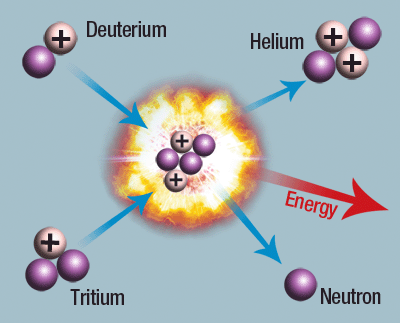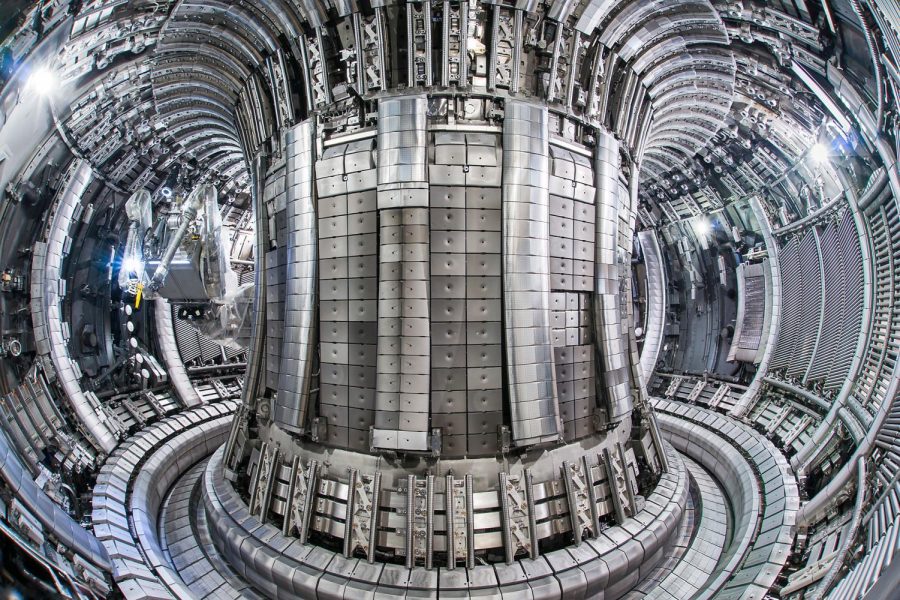Recent Development in Nuclear Fusion Towards a Low Emission Future
February 24, 2022
Scientists working at the Joint European Torus (JET) in Oxfordshire, U.K. announced that they had broken their previous record of generating 22 megajoules for five seconds by roughly 2.6 times generating 59 megajoules for five seconds. This may not sound like much, but once you understand its importance, it is potentially world changing.

First, however, we must have a basic understanding of the process that goes into nuclear fusion. The atoms are heated to a high enough temperature to allow a fusion reaction to take place between deuterium and tritium to fuse to produce helium, which then loses its neutron, releasing vast amounts of energy (heat) to boil water into steam to power a turbine to generate electricity. Meaning that fusion is the fusing of two or more smaller atoms into a larger one
The problem with this method is that the energy needed to generate the temperature to allow fusion has to be lower than the energy produced by the reaction. The problem that has been plaguing scientists for decades. Now you understand the basics, let us get back to why this development is critical for our low emission future. They used the same mixture in both reactions, the difference being the efficiency of the heat generation required by the Fusion Process. This validates the design choices being made for ITER, a Fusion Reactor being built in France supported by the US, China, EU, India, Korea, and Russia with the goal to produce ten times the amount of energy that is put in eg. 50 to 500 megawatts. Meaning we can use the same amount of fuel to produce greater amounts of energy. “The energy you can get out of the fuel deuterium and tritium is massive. For example, powering the whole of current UK electrical demand for a day would require 0.5 tonnes of deuterium, which could be extracted from seawater — where its concentration is low but plentiful,” Tony Roulstone from the University of Cambridge’s Department of Engineering told CNN. Meaning at least a total fuel consumption of 186 tonnes for one year. In contrast, the United Kingdom consumed 54.7 million metric tons of oil in 2020.
ITER will come online around the year 2026 in a low power testing phase before being given a mixture of 50:50 of deuterium and tritium in 2035. It will use powerful cutting edge magnets that are actively cooled to -269°C to generate a continuous magnetic field to contain the reaction. “No materials exist that can withstand direct contact with such heat. So, to achieve fusion in a lab, scientists have devised a solution in which a superheated gas, or plasma, is held inside a doughnut-shaped magnetic field.” according to BBC News. ITER’s stated purpose is “scientific research, and technological demonstration of a large fusion reactor, without electricity generation.” according to Bloomberg. Estimates place the total cost between “$45 billion and $65 billion, though these figures are disputed by ITER”. According to Newsweek, Regardless of the final cost, ITER has already been described as “the most expensive science experiment of all time” according to Forbes and Popular Science. DEMO is the machine that will “bring fusion energy research to the threshold of a prototype fusion reactor. After ITER—the machine that will demonstrate the technological and scientific feasibility of fusion energy—DEMO will open the way to its industrial and commercial exploitation.” according to the ITER organization. Meaning the Fusion powering our homes is still a couple of decades away, but with every step, we take we will eventually make that great leap forward for all.

